A men’s skin doctor sets the record straight
By: Dr. Robert Goerig
When it comes to “anti-aging” and “hair loss” remedies for men, there is a lot of misinformation out there. The board-certified dermatologists at Vorteil Dermatology and Aesthetic Science set the story straight. Dr. Goerig debunks the top ten most common men’s skin myths on the internet.
Myth #1: Men’s skin is the same as women’s skin
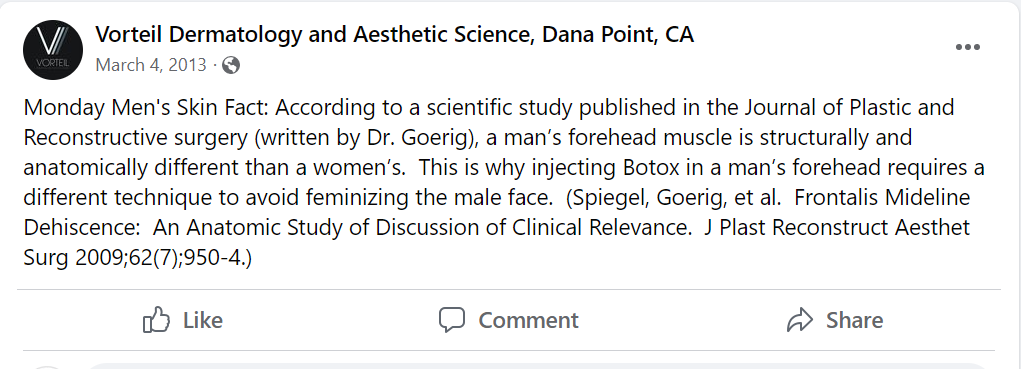
Men’s skin is different than women’s skin. It is up to 40% thicker, pumps out five times more oil, and contains more sebaceous glands. Different skin and hair conditions are also much more frequent in men. This includes rosacea/rhinophyma (see Myth #5), acne scarring, and male pattern hair loss, to name a few. Men’s skin also ages differently than women’s, losing collagen more rapidly after the age of 30. Men’s facial anatomy is different too. In fact, the team at Vorteil published the first scientific article on the differences in the forehead anatomy in men versus women. The study revealed doctors must approach using wrinkle-relaxing injections, such as Xeomin, for men differently to avoid feminizing the male face.
Myth #2: Men don’t need to use sunscreen
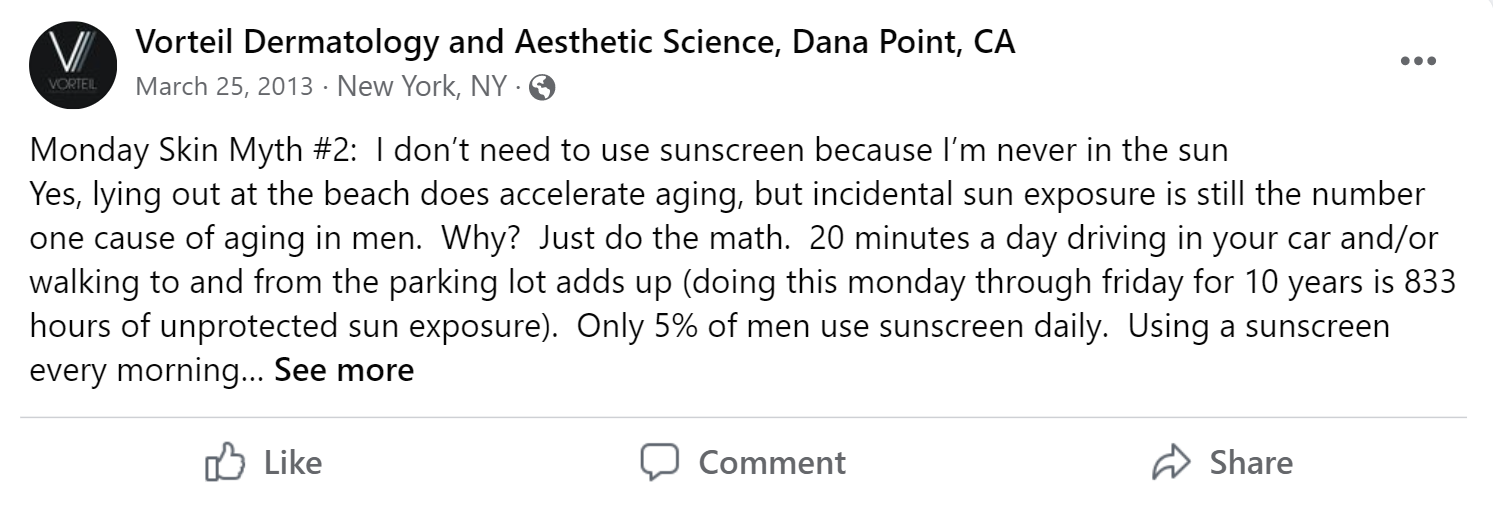
Yes, lying out at the beach does accelerate aging. However, incidental sun exposure is still the number one cause of aging in men. Why? Just do the math. Twenty minutes a day driving in your car and/or walking to and from the parking lot adds up. Doing this Monday through Friday for 10 years is 833 hours of unprotected sun exposure. Only 11% of men use sunscreen daily. Using sunscreen every morning (after shaving) is critical in fighting against skin aging.
Myth #3: Wrinkle-relaxing treatments (neuromodulators) are for women
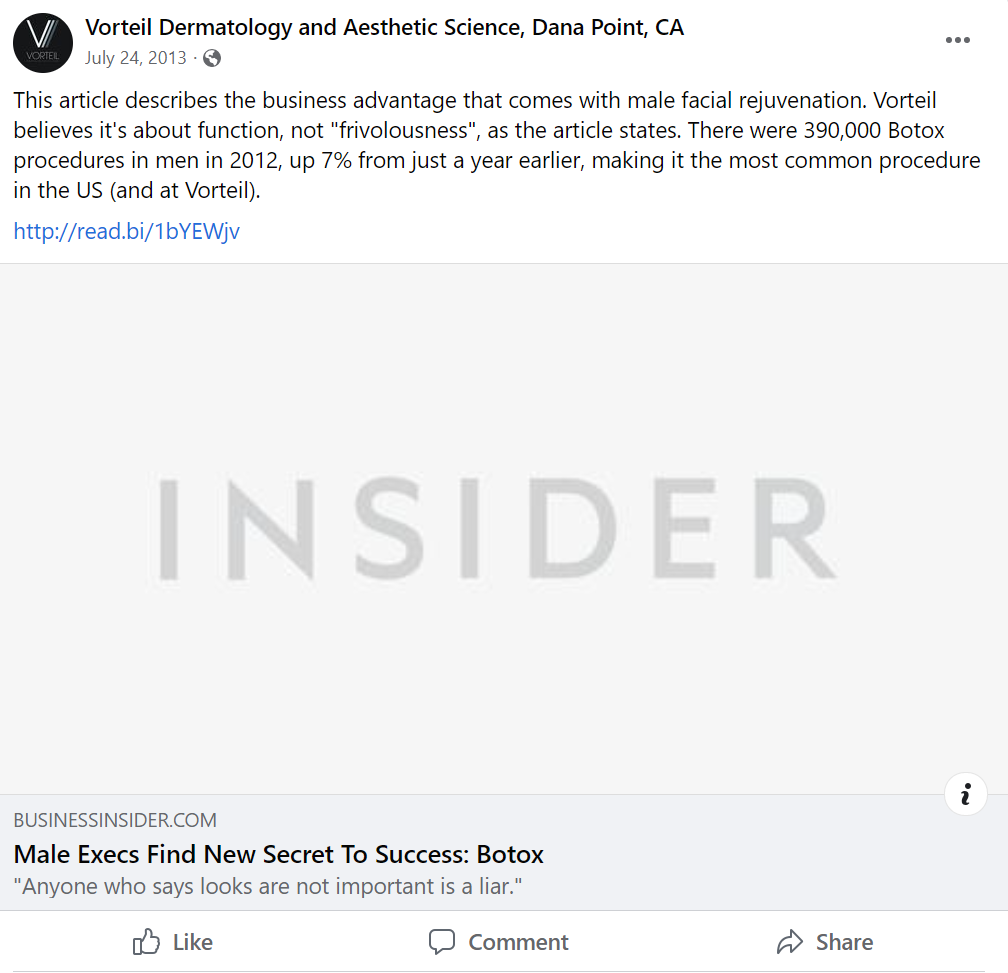
Neuromodulators are the most common anti-aging procedure in men. According to the latest statistics, over 389,000 men had the procedure last year, up 314% from a decade ago. Why are men increasingly seeking this treatment? Because neuromodulator injections are extremely safe. It only takes ten minutes to perform and lasts 3-4 months. This treatment corrects wrinkles so well that most professional guys consider it essential, especially in industries where looks matter.
Myth #4: Anti-aging creams and serums really work

The Food and Drug Administration (FDA) does not regulate over-the-counter anti-aging products. Meaning the manufacturers of these products are not required to show scientific evidence that they work. Most of these products contain a moisturizer (such as dimethicone or glycerin) which can improve fine lines through the retention of water on the skin. Sunscreens (such as oxybenzone and avobenzone) are usually in the product as well. There is proof sunscreens prevent skin aging. However, there is no proof that the antioxidant, caviar extract, and other exotic ingredients fend off aging. The bottom line is a $10 sunscreen and Cetaphil moisturizer will work as well as a $500 anti-aging cream. These overpriced anti-aging creams and serums are just media hype and fancy packaging.
Myth #5: Men that get anti-aging procedures are “vain”
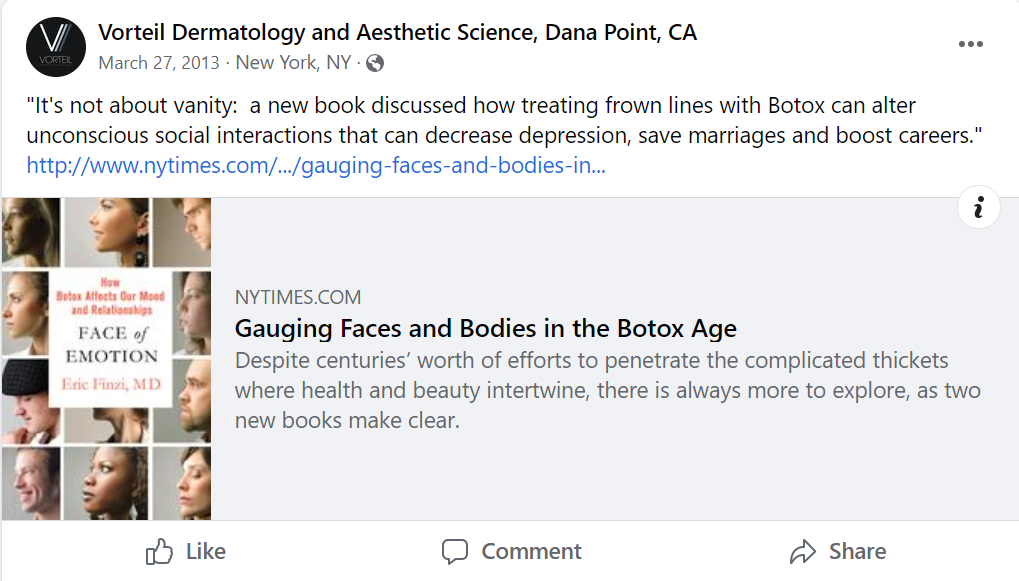
It’s not about vanity. It’s about function. Most men get anti-aging procedures to look refreshed and rejuvenated, not to look prettier. The aging process is relentless in every man; some choose to take action while others choose not to. Regardless, the necessity to stay competitive, both personally and professionally, is a major driving force in most men. Think restorative, not cosmetic.
Myth #6: Skin aging is caused by genetics

Genetics only plays a very minor role in skin aging. This depends mostly on a man’s skin complexion and pigmentation pattern. Basically, the lighter your complexion, the more susceptible you are to skin aging. Current medical literature shows nearly 90% of skin aging happens from cumulative exposure to the sun’s harmful UV rays. A simple analogy for skin aging would be that if genetics loads the gun, sun exposure pulls the trigger.
Myth #7: Hair transplantation uses “plugs” and looks unnatural
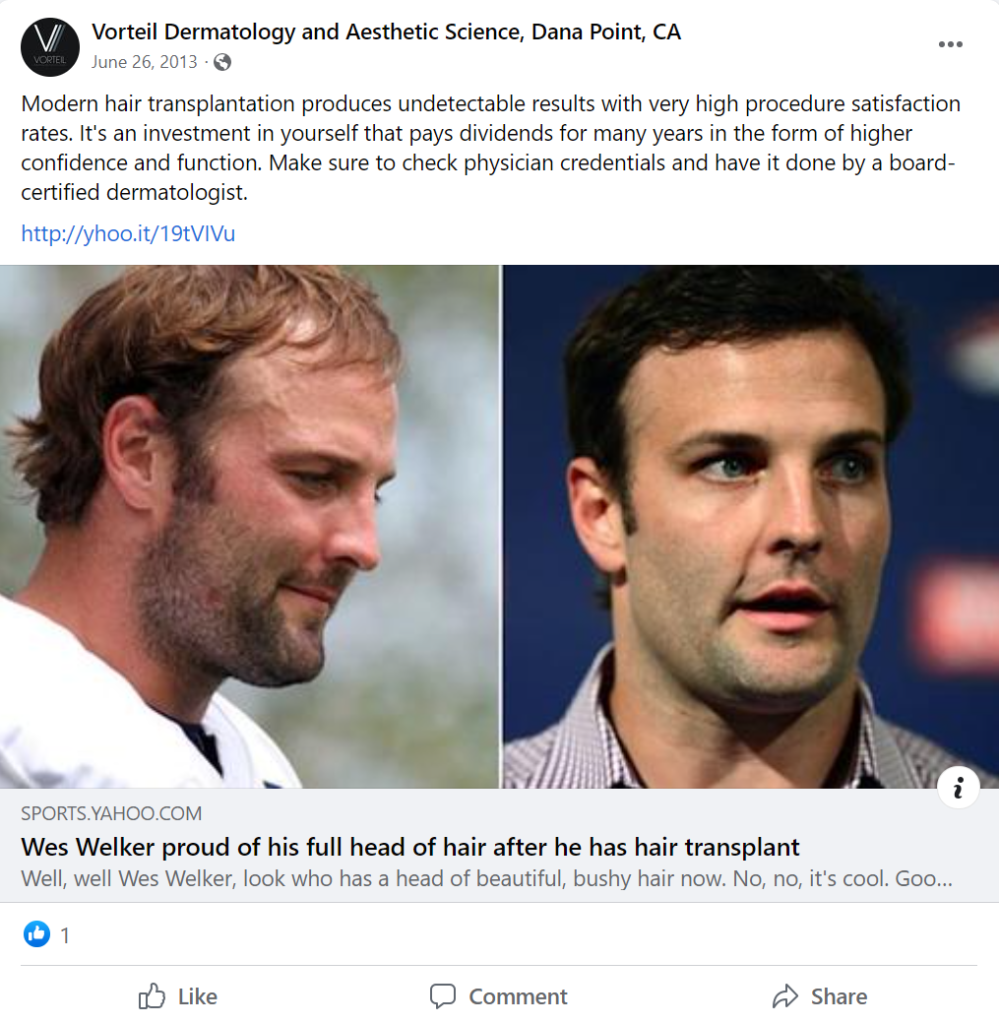
Hair transplant methods used in the 1970s and 1980s, “plugs” are now a thing of the past. Plugs consisted of cylinders of skin that contained 10-14 hairs each. When transplanted to the hairline, it produced an unnatural appearance that resembled “doll’s hair”. Modern hair transplantation uses a technique called follicular unit transplantation. This technique takes individual hair follicles to be transplanted to the balding areas using sophisticated microscopes. When performed by a board-certified (MD) dermatologist, the results are undetectable. In fact, most barbers won’t even recognize them.
Myth #8: Redness of the nose means you’re an alcoholic
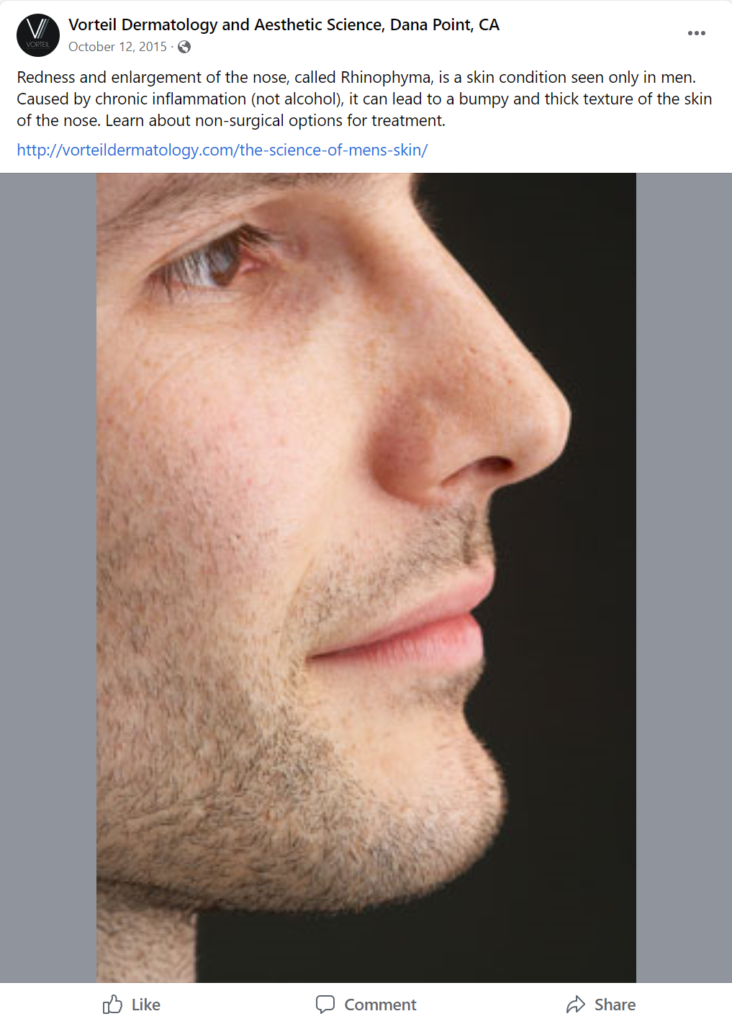
Men’s skin myth #8 is false. A skin condition called Rosacea causes nose redness. Rosacea is an inflammatory skin disorder with features of both acne and eczema. Rhinophyma is a subtype of rosacea and is more common in men. Rhinophyma results from excessive oil gland enlargement producing thick bumps and a bulbous nose. Although alcohol, in addition to spicy foods and hot showers, can flare rosacea. Those factors do not cause nose redness.
Myth #9: Men have to use moisturizer in the morning.
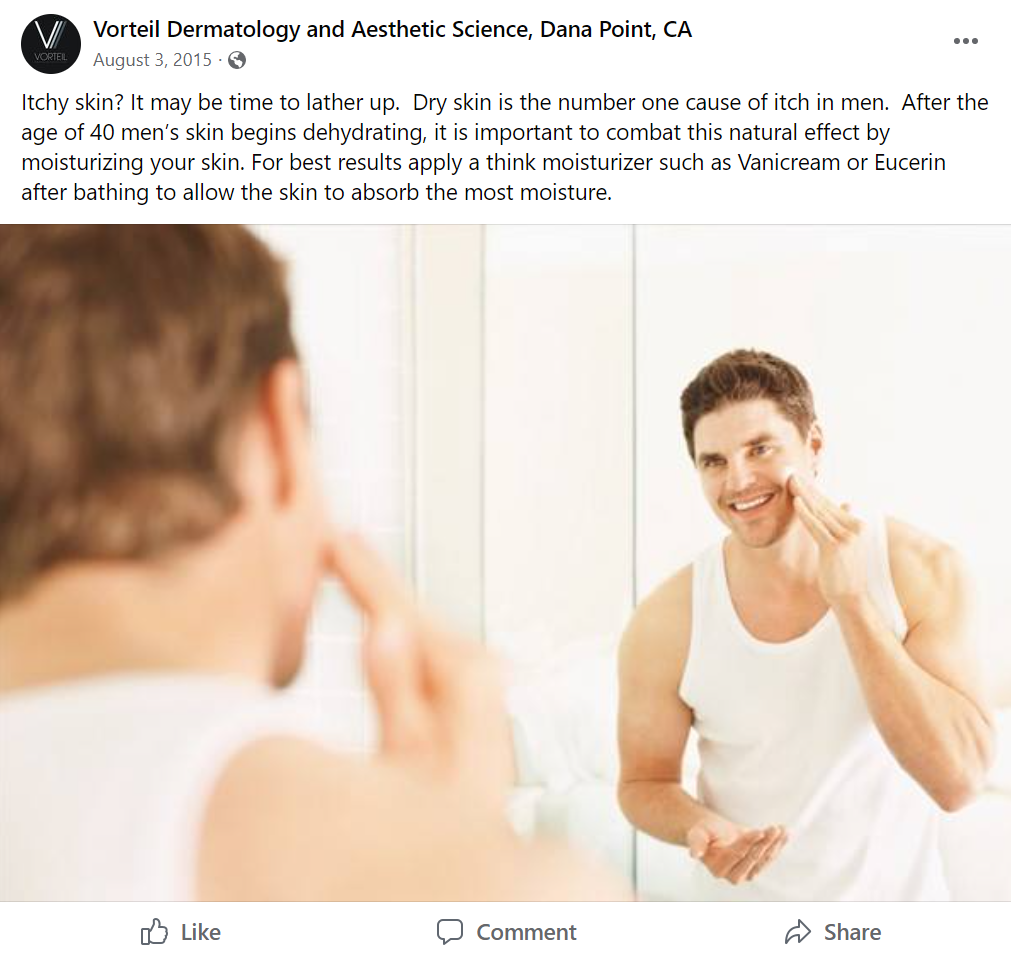
Moisturizer works not by adding moisture to the skin, but by preventing moisture from leaving the skin. A high-quality bland moisturizer, such as Cetaphil, can improve a man’s complexion. It improves a man’s complexion by combating very fine lines, reducing redness, and improving texture. Since the skin is in recovery mode during sleep, the best time to apply moisturizer is actually before bed. In the morning, apply a zinc oxide-based sunscreen instead.
Myth #10: Hair loss shampoos don’t work
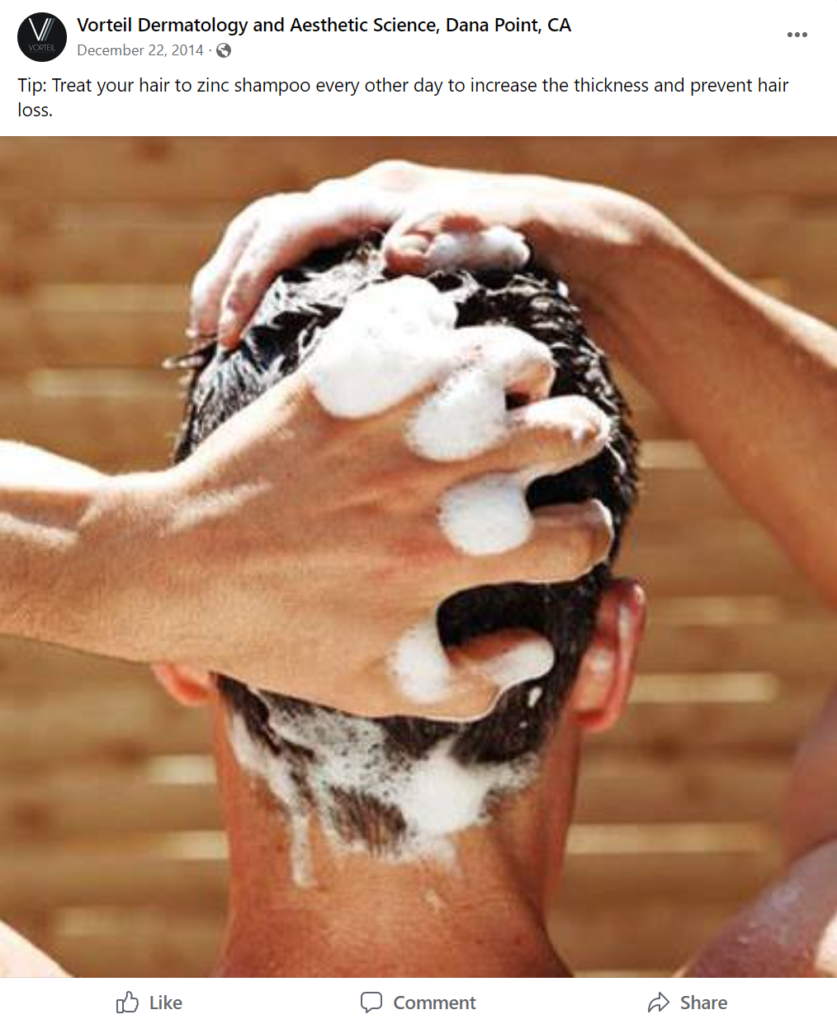
Thinning hair is natural, and comes with age, but there are some ways to prevent or lessen the effects of natural thinning. To combat thinning hair try using a shampoo with Zinc, a natural mineral that protects against hair loss by blocking certain hormones. It is important to remember that shampoo can strip the natural oils from the hair and cause brittleness of the follicles. It is also important to not shampoo more often than every other day. So Treat your hair to zinc shampoo every other day to increase the thickness and prevent hair loss, and you will be on your way to a full head of hair.
Chaitanya Garud